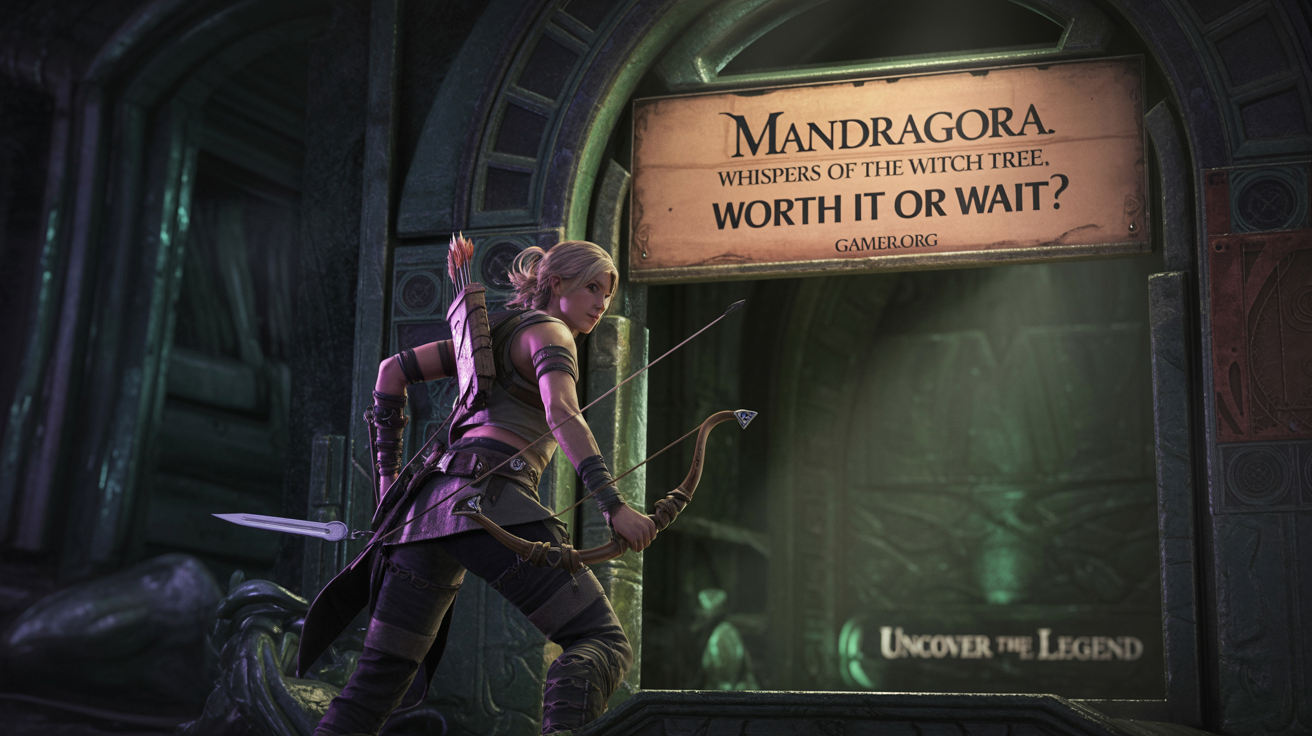Mandragora: Whispers of the Witch Tree – Worth It or Wait?

Mandragora: Whispers of the Witch Tree from Primal Game Studios merges moody medieval visuals with Soulslike mechanics and Metroidvania-inspired exploration. While the backtracking, ability-gated progression, and stamina-based combat are familiar, the overall execution has a few unique touches. Players begin on the side of the Inquisition, only to be transformed by forbidden powers during a witch’s execution. This twist sets the stage for an eerie and morally ambiguous journey filled with corrupted lands, eldritch whispers, and mysterious characters.
The combat draws heavily from Soulsborne-style gameplay. Expect stat-scaling weapons, dodge rolls, and punishing boss fights. It’s not as complex or polished as FromSoftware’s offerings, but the enemy design, attack animations, and hit feedback feel competent. Some early repetition in boss design—giant rats, for example—dulls the impact, but the variety picks up later on.
A World That Rewards Exploration, Despite Some Frustration
The game shines in its world-building and level design. From city outskirts to toxic swamps and collapsing towns, each area invites exploration. Multiple sewer systems differ in layout and tone, keeping traversal interesting. While backtracking is essential, it rarely feels tedious thanks to branching paths and hidden challenges.
Still, exploration comes with its drawbacks. Platforming can be inconsistent, especially when trying to drop down onto ledges. Fall damage is annoyingly unpredictable, sometimes punishing players for simple mistakes. These issues, combined with a lack of frequent checkpoints, make death more irritating than it should be.
Locked chests litter the early areas, and with lockpicks being rare at first, revisiting zones becomes necessary for completionists. Though functional, this mechanic feels more like artificial padding than a rewarding system.
Combat Variety and Progression Systems Offer Depth—At a Cost (Mandragora: Whispers of the Witch Tree)
Class variety and build customization add depth to the experience. Choosing Flame Weaver offered a satisfying balance of magic and melee, and each class features its own passive tree. However, most early upgrades provide dull stat increases rather than exciting new abilities. Multi-classing adds intrigue by allowing players to find and equip additional skill trees, provided they meet the relic and weapon requirements.
Skill tuning adds a light layer of strategy, enabling tweaks to mana costs or adrenaline generation. Crafting, unfortunately, is a less compelling system. Players must grind materials and also invest time into leveling vendors just to access better gear. While not inherently bad, this two-layered progression feels excessive and interrupts the game’s flow.
Visuals, Sound, and Presentation Carry Mandragora Forward
Where Mandragora excels is its presentation. Environments have a hand-painted aesthetic that evokes No Rest for the Wicked, but with a softer, more natural palette. Lighting and shadow work are beautiful, lending each zone a distinct atmosphere. Character portraits in dialogue scenes are detailed and expressive, though some clash with their in-game models.
Voice acting is a mixed bag. Side characters, especially ambient NPCs, feel authentic and add to the world’s lived-in feel. Whether it’s overhearing banter between travelers or merchants bickering, these moments build immersion. Sadly, the protagonist’s monologues and delivery fall flat, feeling stiff and disconnected from the rich environment.
Final Verdict: Worthwhile for Soulslike Fans with Patience
Mandragora: Whispers of the Witch Tree is far from perfect. Its movement quirks, dull progression moments, and inconsistent polish hold it back from greatness. But its captivating art direction, clever world-building, and satisfying combat offer enough reasons to stick with it. It may not redefine the genre, but it delivers a memorable adventure with strong highs and forgivable lows.













